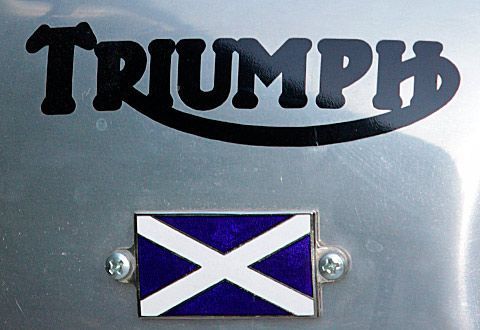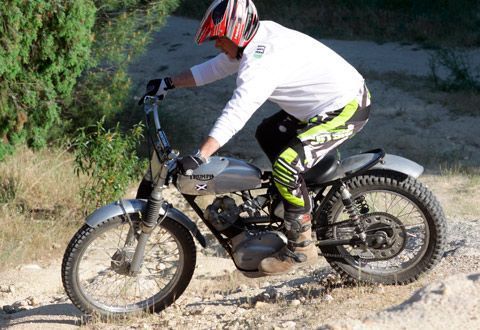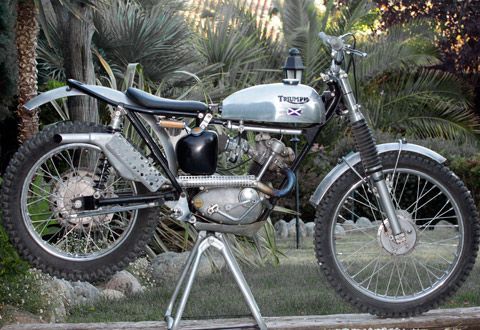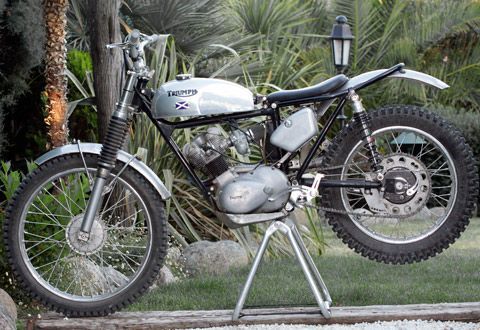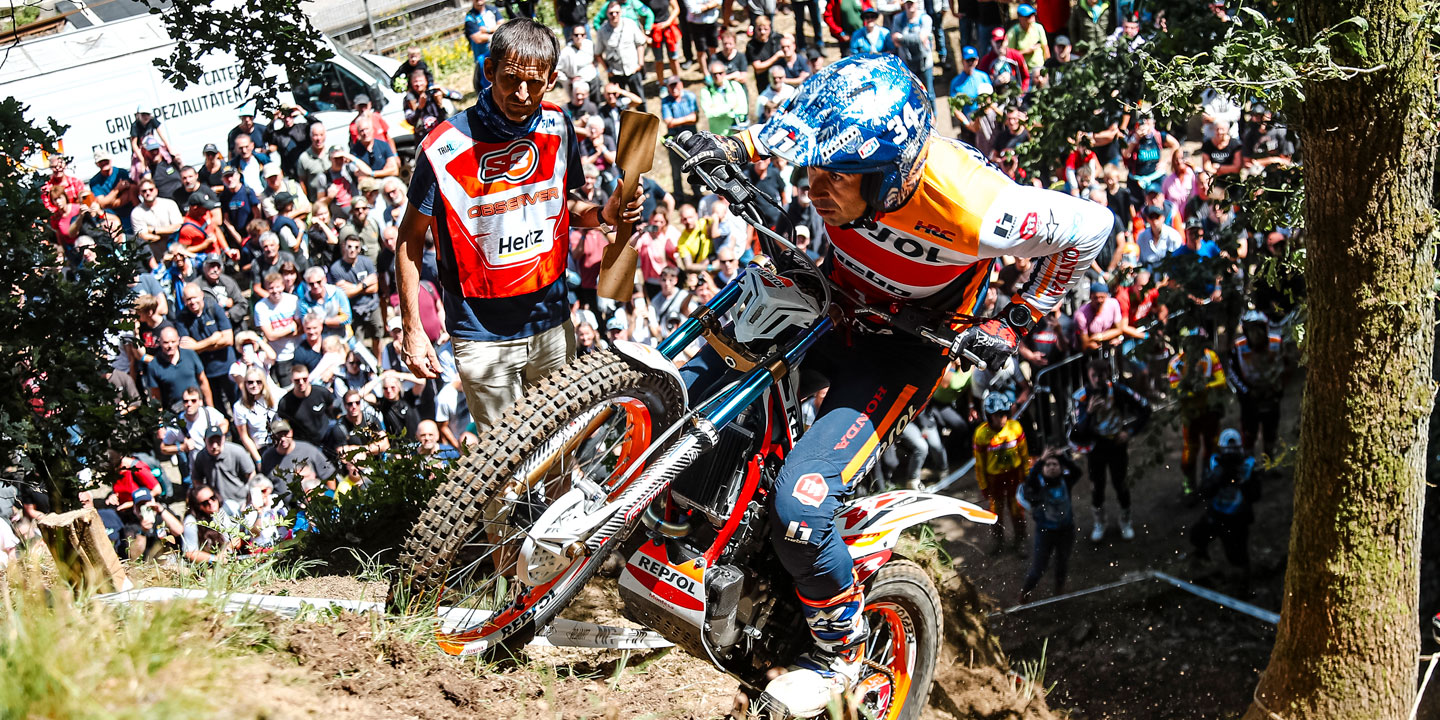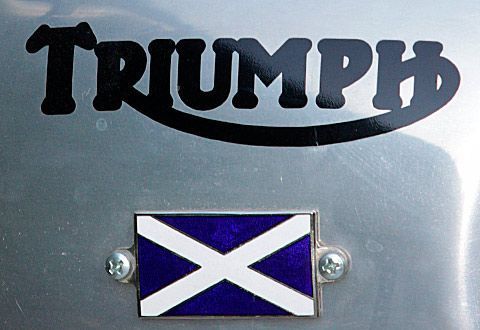
More and more enthusiasts are choosing to restore, prepare or update models that are more than twenty years old to relive the sensations of a golden age. The riding style, more leisurely, rided, elegant and sensational, increasingly captivates young and old.
Specific international competitions such as the 2 days of Robregordo, with more than 250 entries, or the Scottish Pre-65 themselves, justify that the passion to maintain the roots of this sport are very strong.
At Trialworld We have already conducted in-depth testing of two models that meet the characteristics of a Pre65: the Bultaco Sherpa T Model 10 and the Sprite Trial 250. Now it’s the turn of another legendary model, whose brand is not only still alive, but has become one of the most popular of the 21st century. We’re talking, of course, about Triumph.
The British Dream
We can say that the story of this British manufacturer is similar to that of the Phoenix, which rose from the ashes. Triumph started its activity in 1885, although at that time the firm was dedicated to producing bicycles. It would be in the mid-fifties when the first field prototypes were made, coming from the road-going Tiger Cub marketed by the brand: larger rims, specific knobby wheels and a larger crown were mounted in order to gain strength.
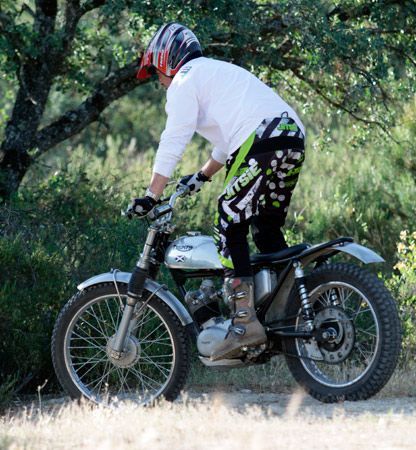
The unit that is the subject of this report is one of the last to be manufactured, and incorporates two substantial differences with respect to those marketed until 1962. The first engine had the platinum box above the central crankcase; It was then repositioned to the right crankcase above the gear lever. The second difference lay in the fork, which was replaced by a more robust one, since the original from the Tiger Cub road was not able to withstand the demands of the Trial.
Although this model is exclusive in itself, we have made a series of evolutions to it in recent weeks to improve certain shortcomings of the original.
In the thermodynamic group we find a 25mm AMAL MK I concentric carburetor that feeds a 200 cc . air-cooled engine, and the four-speed gearbox, whose lever is operated from the right side. As a result, the brake pedal is originally located on the left, although it is now adapted for use from the right. This means that with the right foot we operate the brake, the gearbox and also the start.
To complete the restoration, the oil tank has been relocated and integrated into the chassis, specifically under the tank .
As for the suspensions, the Triumph is equipped with a double shock absorber anchored directly to the swingarm, with no spring in sight, although, as can be seen in the photos, these have been replaced by Aluminum Rockshocks courtesy of ARS Parts, whose spectacular performance significantly improves the sensations of a rear end with little travel margin.
The brakes are not changed, maintaining the drums of the time, whose performance is also surprising compared to other models a decade more modern than our protagonist.
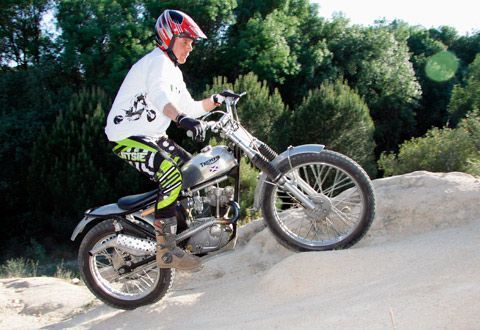
With all this, the Tiger Cub clocked in at 89 kilos, a really good figure considering that it was created
50 years ago.
Feelings
It is said that every good trialist should go to Scotland at least once in his life to take part in the Scottish. Doing it at the controls of a Pre65 should be an even purer and more exciting feeling. Authentic trial: round stones, rivers, moss, mud. The perfect habitat for a bike like the Tiger Cub.
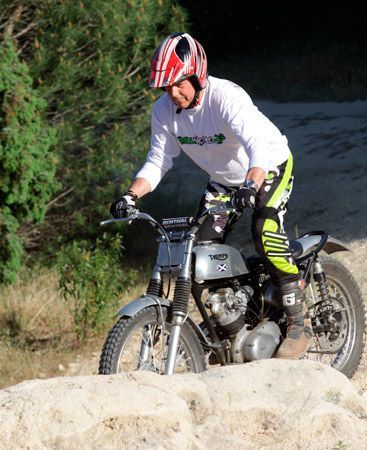
The British engine pushes well, but it’s over soon. Striking a good balance between the two is difficult, as too long a development could ruin the torque with which the Tiger pushes without the help of the clutch in the zones. Consequently, it is best to interpret the virtues of its engine well, taking advantage of inertia, avoiding dry throttle blows and playing a lot with the low and medium rev range.
A purist never will, though. If you need to use the Tiger’s clutch in the middle of the area, you can. Its progressiveness and good touch are surprising. Undoubtedly, this is an advantage to help the engine in areas where we have no choice but to use long speeds, such as steep unevenness or obstacles that require greater inertia.
In terms of chassis, it’s a very noble bike; easy to get into corners, balanced and stable. You can tell, compared to a classic of the seventies, that the Triumph wants to keep the knobs of both wheels glued to the ground at all times, looking for the line; in short, rolling. Thanks to the new ARS Rockshocks, the bike has greatly improved its behavior in obstacles , because where before you quickly lost traction, now you feel that the bike traces the terrain much better. We must not forget that this bike has much less travel in the rear suspension than a modern motorcycle, in addition to equipping tires with tubes.
This unit, owned by Trialworld, we trust that it will set foot in Scotland and through its kilometers traveled we can share with all of you a sensation as pure as it is to travel the Scottish Highlands as it was done half a century ago.
Text and photos: David Quer / Action: JLQ
Acknowledgements: Alfonso Bardos, José Franqueira (ARS) and Andrés Benzal (Vinces Motor)
{bonckowall source=”2″ pkey=”album” pvalue=”118194148099969645904″ pvalue2=”TriumphTigerCub” }{/bonckowall}
